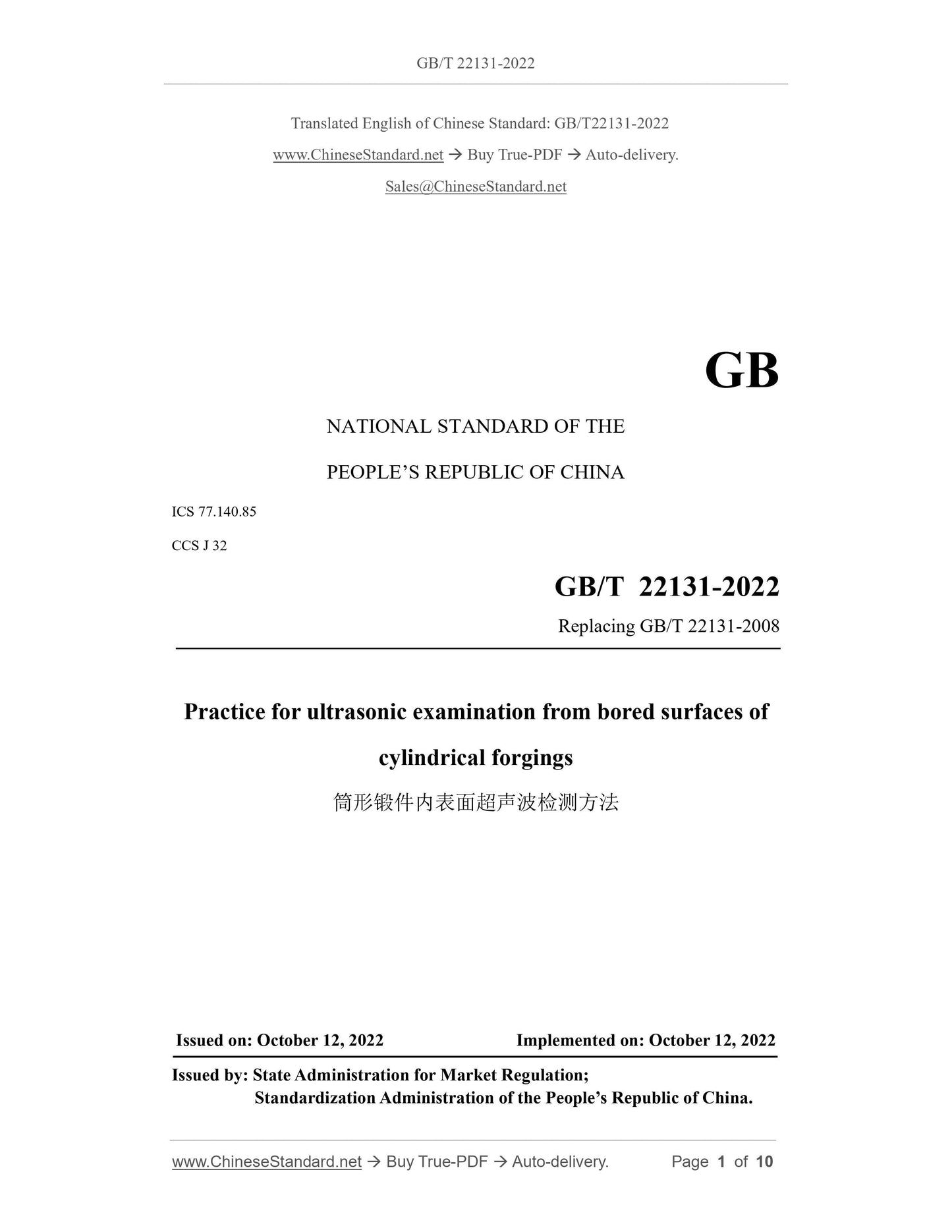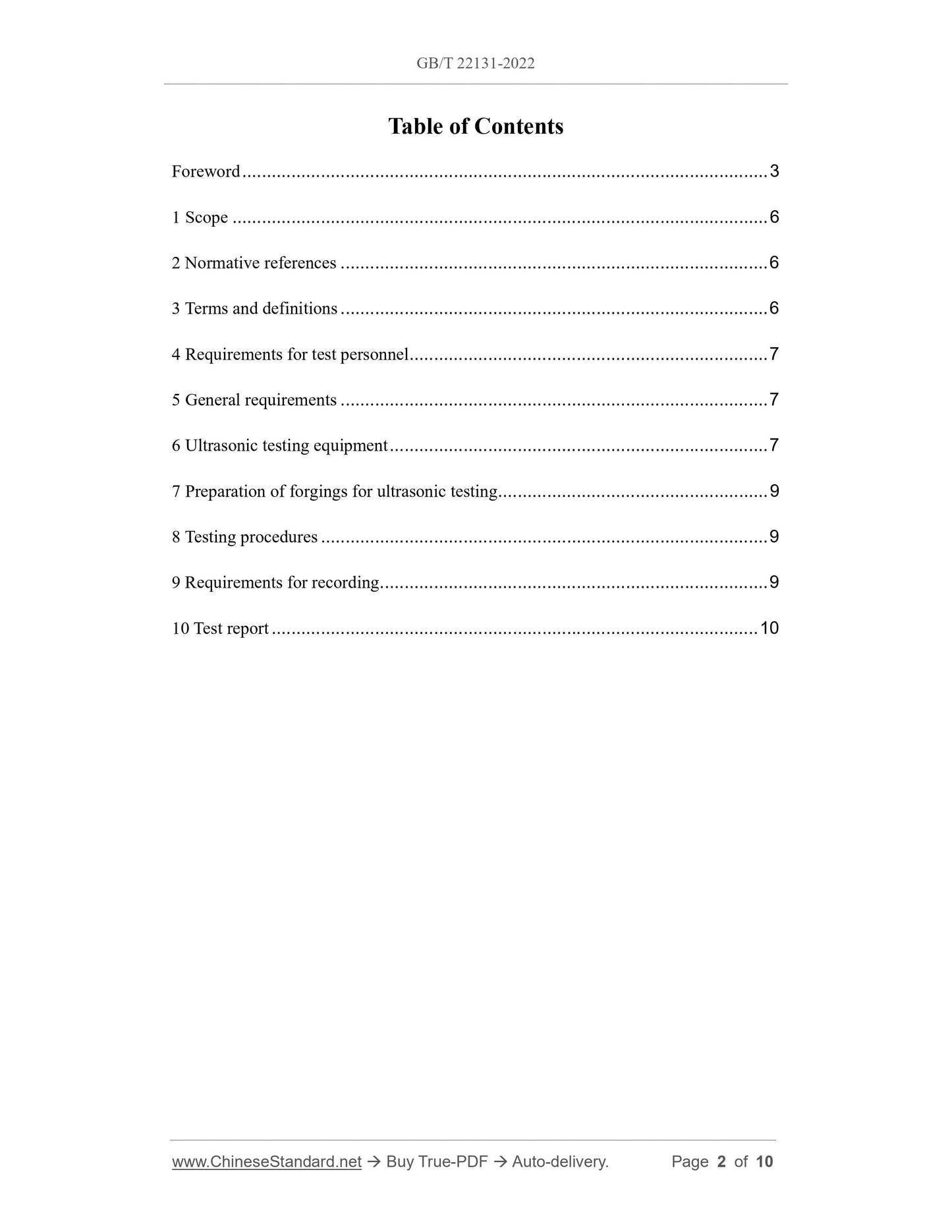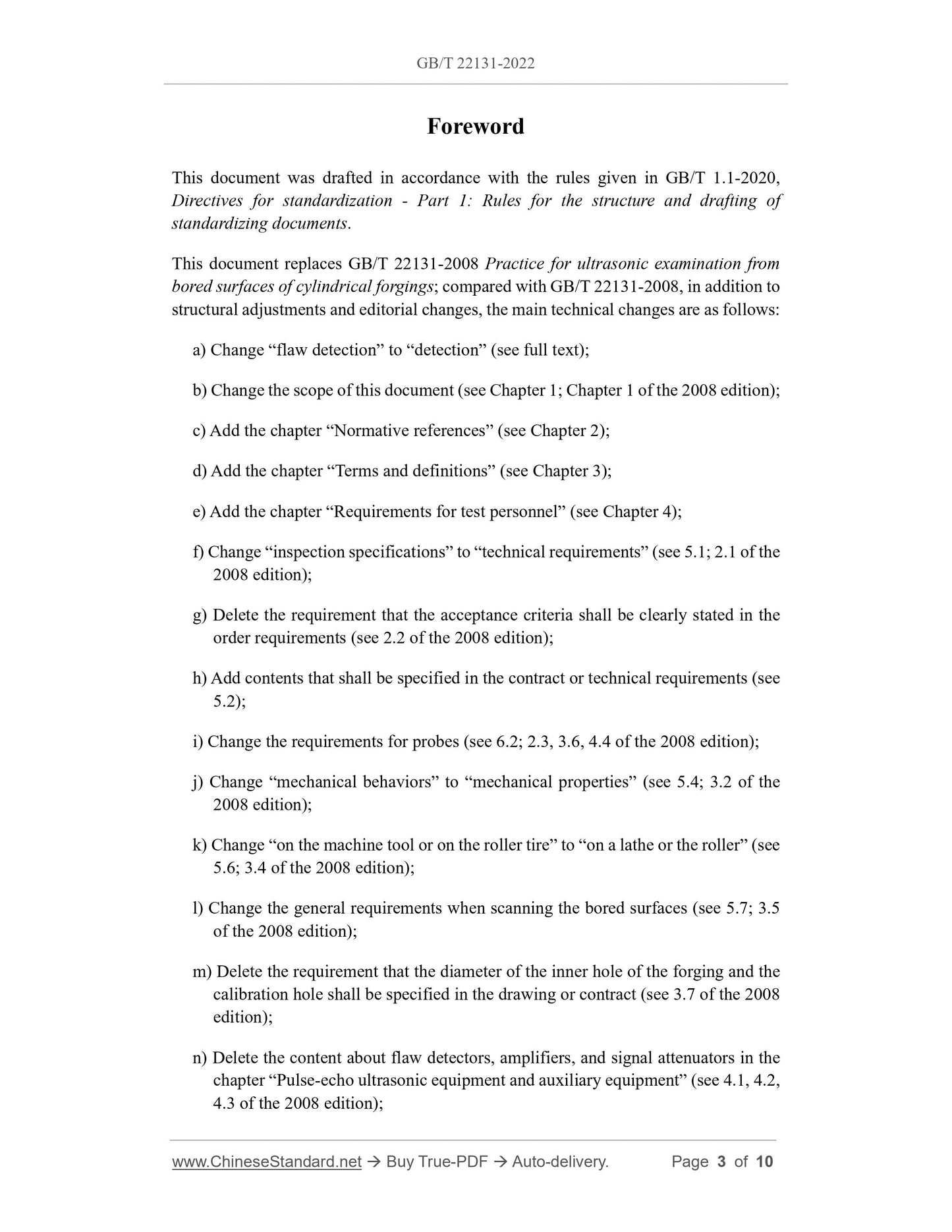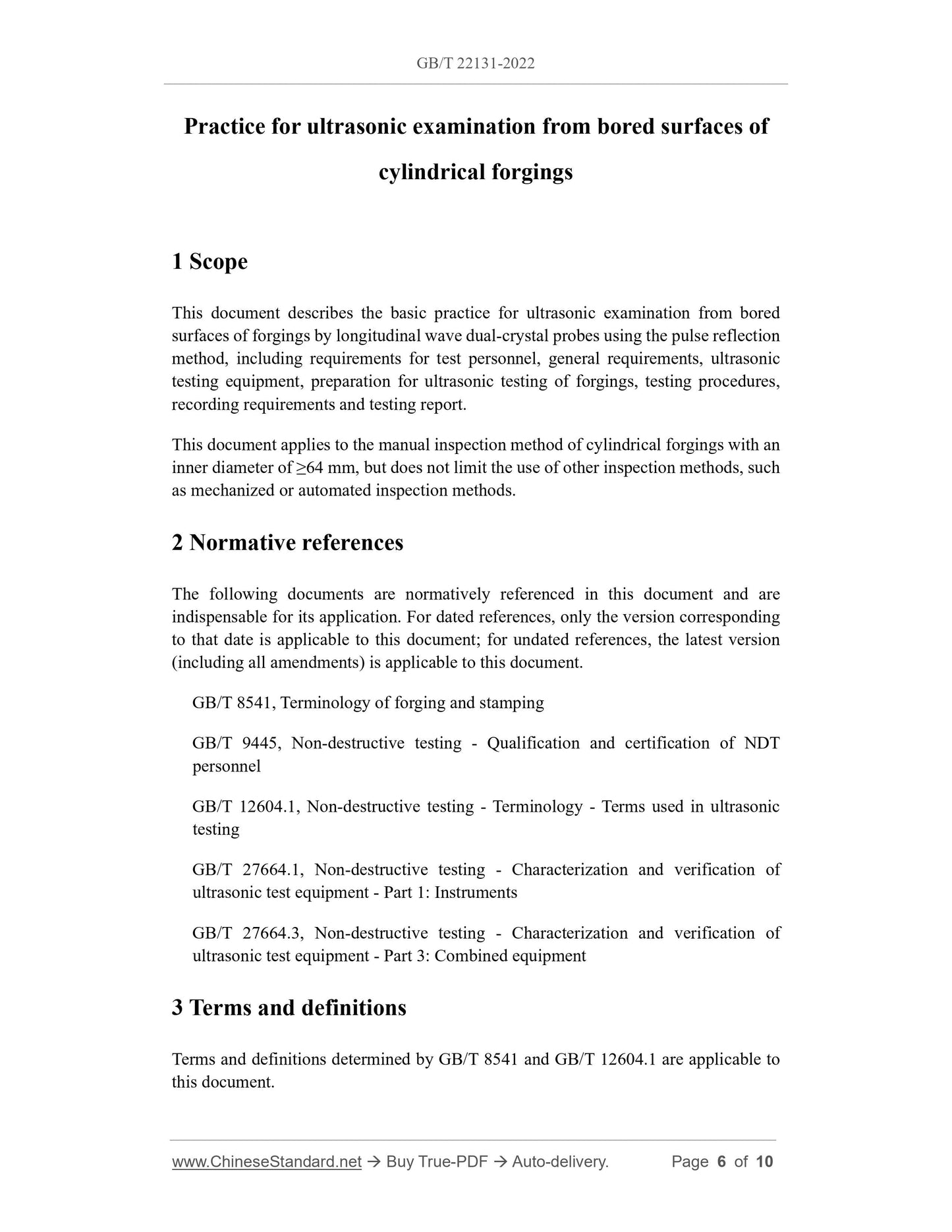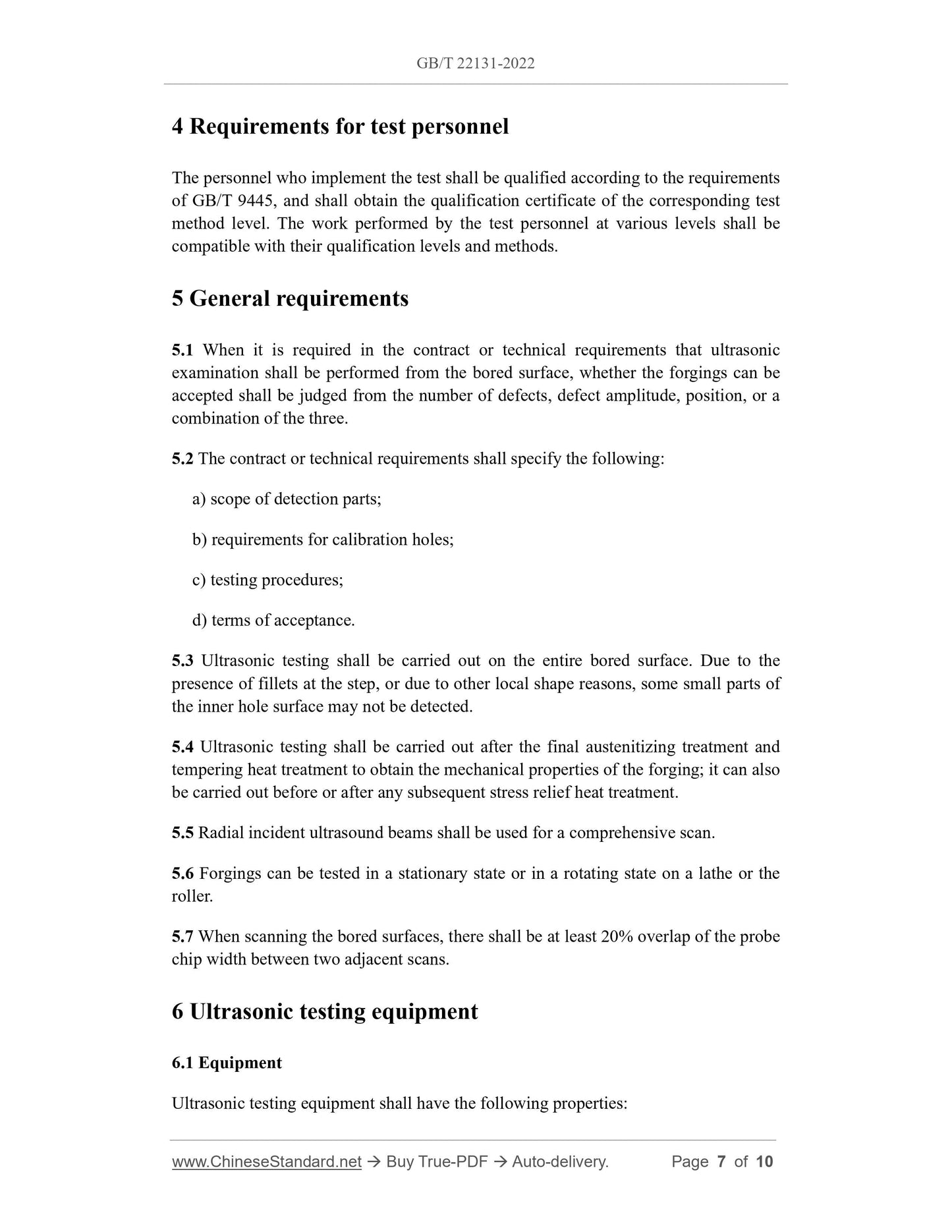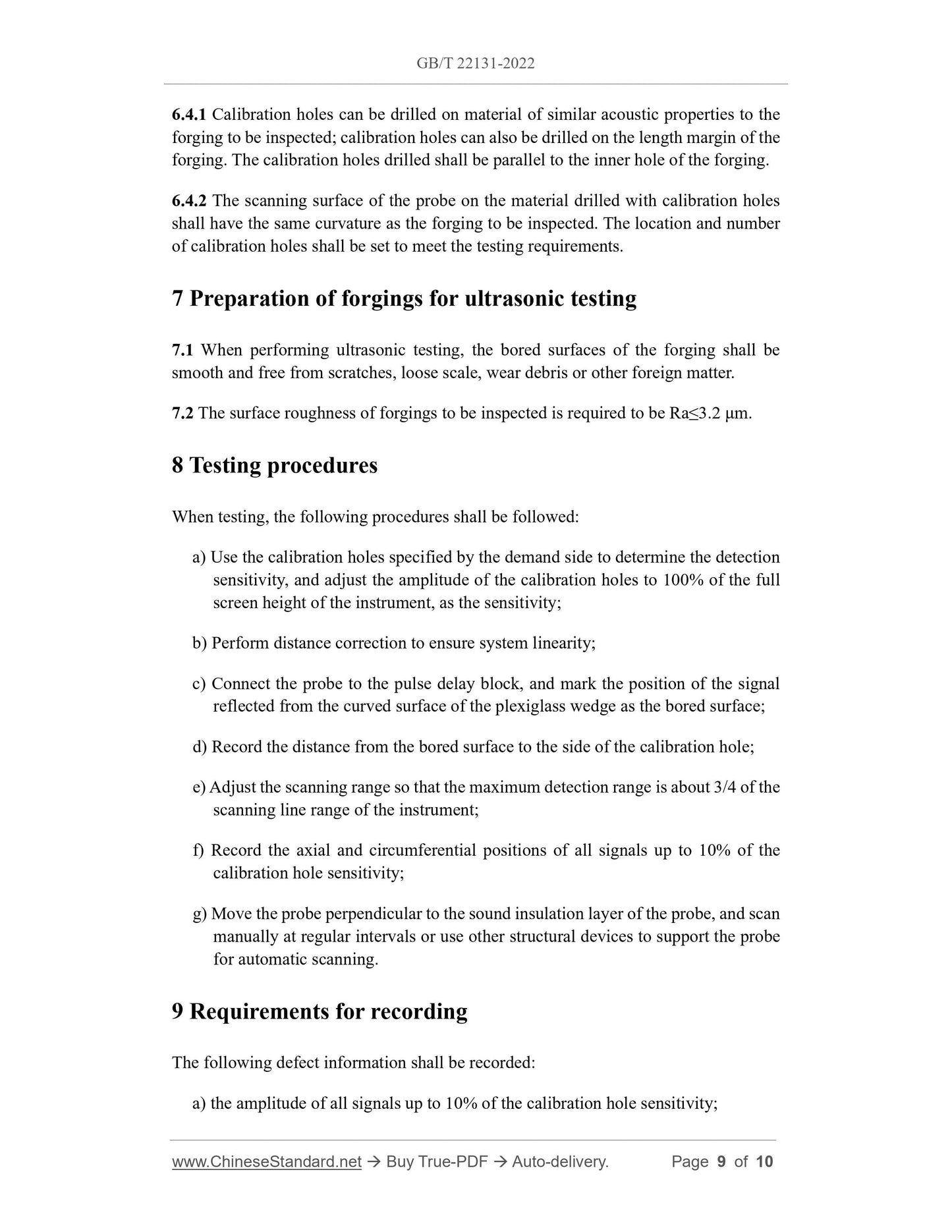1
/
of
6
www.ChineseStandard.us -- Field Test Asia Pte. Ltd.
GB/T 22131-2022 English PDF (GB/T22131-2022)
GB/T 22131-2022 English PDF (GB/T22131-2022)
Regular price
$95.00
Regular price
Sale price
$95.00
Unit price
/
per
Shipping calculated at checkout.
Couldn't load pickup availability
GB/T 22131-2022: Practice for ultrasonic examination from bored surfaces of cylindrical forgings
Delivery: 9 seconds. Download (and Email) true-PDF + Invoice.Get Quotation: Click GB/T 22131-2022 (Self-service in 1-minute)
Newer / historical versions: GB/T 22131-2022
Preview True-PDF
Scope
This document describes the basic practice for ultrasonic examination from boredsurfaces of forgings by longitudinal wave dual-crystal probes using the pulse reflection
method, including requirements for test personnel, general requirements, ultrasonic
testing equipment, preparation for ultrasonic testing of forgings, testing procedures,
recording requirements and testing report.
This document applies to the manual inspection method of cylindrical forgings with an
inner diameter of ≥64 mm, but does not limit the use of other inspection methods, such
as mechanized or automated inspection methods.
Basic Data
| Standard ID | GB/T 22131-2022 (GB/T22131-2022) |
| Description (Translated English) | Practice for ultrasonic examination from bored surfaces of cylindrical forgings |
| Sector / Industry | National Standard (Recommended) |
| Classification of Chinese Standard | J32 |
| Classification of International Standard | 77.140.85 |
| Word Count Estimation | 6,697 |
| Date of Issue | 2022-10-14 |
| Date of Implementation | 2022-10-12 |
| Older Standard (superseded by this standard) | GB/T 22131-2008 |
| Issuing agency(ies) | State Administration for Market Regulation, China National Standardization Administration |
Share
